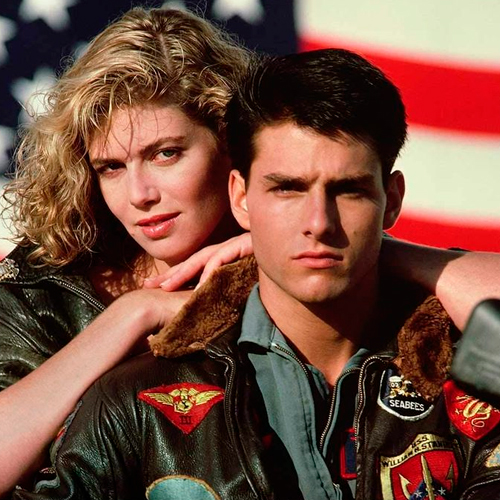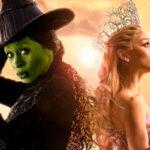

“Top Gun” is an iconic 80s movie that solidified itself as one of the decade’s biggest hits and a cultural landmark. Released in 1986, the film not only catapulted Tom Cruise to stardom but also left an indelible mark on pop culture with its high-octane scenes and unforgettable soundtrack.
Directed by Tony Scott, the movie captured the essence of the adventurous spirit and camaraderie among U.S. Navy fighter pilots, offering an exciting and dramatic glimpse into life aboard combat jets.
Besides the electrifying aerial sequences and engaging storyline, “Top Gun” also stood out for its influence on the fashion and music of the era. In this text, we’ll explore some of the most fascinating trivia about this timeless classic, revealing behind-the-scenes secrets and little-known facts that make “Top Gun” an even more special film.
1 – VAL KILMER HATED THE SCRIPT
When Val Kilmer was invited to the film, he hated the script and initially didn’t want to take part. However, due to contractual obligations, he had no choice but to accept the role.
To ease the situation, director Tony Scott assured Kilmer that the script wasn’t finalized yet and that he would have the freedom to improvise. During filming, changes to the script and the excitement of the fighter jet scenes led Val to reconsider his stance, and he eventually became positively involved in the project.
2 – TOM CRUISE DIDN’T WANT TO BE PART OF THE MOVIE
Another actor who initially didn’t want to be part of the film was none other than Tom Cruise. Yes, the very star of the franchise. It was producer Jerry Bruckheimer who persuaded him to get involved in the project by enlisting the U.S. Navy Blue Angels to pick him up and perform a series of aerial stunts with Tom Cruise onboard.
What started as an invitation to discuss his action scenes turned into a demonstration of what he could experience. After the flight, Cruise rushed to a payphone, called Jerry, and confirmed his participation. Interestingly, despite initially not wanting to be in the movie, Cruise and Kilmer didn’t talk backstage, much like the characters they played on screen.
3 – TOM CRUISE USED A STUNT DOUBLE
Unlike the “Mission: Impossible” franchise, Tom Cruise did use a stunt double for this movie. The aerial scenes of Pete Maverick were performed by Scott D. Altman, who, due to his experience with the intense pressure of flying at supersonic speeds, went on to become a NASA astronaut in real life. Altman has commanded two space missions and remains a respected figure in the field to this day.
4 – THE FIGHTER JETS
A crucial part of the film was the scenes filmed aboard the fighter jets. According to the producers, only one actor from the cast didn’t get sick during their scenes. And, surprisingly enough, it wasn’t Tom Cruise. Even he felt the effects. The only one who managed to keep his stomach intact was Anthony Edwards, who played Goose.
5 – THE U.S. MILITARY REQUIRED SCRIPT CHANGES
The U.S. Armed Forces required that the script be submitted for their review before filming began. The goal was to ensure that the film portrayed a positive image of their operations to the global audience.
Initially, Goose’s death was to occur in a mid-air collision, but the military intervened and requested the change to the final version presented in the film, aiming to avoid the impression that mid-air collisions were common among pilots.
6 – MILITARY COLLABORATION
These changes were accepted because, without the support of the Armed Forces, the production would have had to rent or build aircraft and warships, which would have been extremely costly. With military collaboration, the cost to use official aircraft and vessels was around $1.8 million.
7 – ONLY TWO MISSILES
Despite the film featuring several aerial battles, the Navy authorized the use of only two real missiles during filming. To make the most of these scenes, the production filmed the launches from every possible angle. For the other scenes, miniature explosions were used.
8 – NAVY INVESTIGATION
The problem was that the miniature explosions looked so realistic that the U.S. Navy suspected the production had violated the agreement of two authorized launches. This led to an investigation to determine if the terms had been adhered to.
9 – RECRUITMENT BOOST
The Navy was thrilled to receive forecasts of the film’s success. Consequently, they sent teams to set up recruitment booths at the exits of major theaters across the country.
The aim was to capitalize on the excitement of young viewers after watching the film to encourage them to enlist in the Navy. The strategy resulted in the largest increase in enlistments in years.
10 – TOTAL BOX OFFICE SUCCESS
“Top Gun” was the highest-grossing film of 1986, earning over $356 million globally. Additionally, its soundtrack won numerous awards, including the People’s Choice Award, Grammy, Golden Globe, and Oscar. In 2022, nearly 40 years after the original, “Top Gun” received a sequel that achieved even greater success, grossing over $1.4 billion. A true phenomenon.
“Top Gun” is not only a cinema classic but also a cultural landmark that impacted the entertainment industry and the U.S. Armed Forces. The film introduced innovations in action scenes, especially in aerial sequences, which became benchmarks in the genre. Moreover, the direct involvement of the U.S.
Navy not only influenced the script but was also a decisive factor in the film’s success, resulting in a significant increase in enlistments. The iconic and award-winning soundtrack, along with charismatic characters, cemented the film as a pop culture phenomenon of the 80s.
Decades later, the sequel released in 2022 reaffirmed the franchise’s relevance, captivating a new generation and breaking box office records. “Top Gun” continues to be remembered for its blend of adrenaline, patriotism, and excitement that made cinema history.








